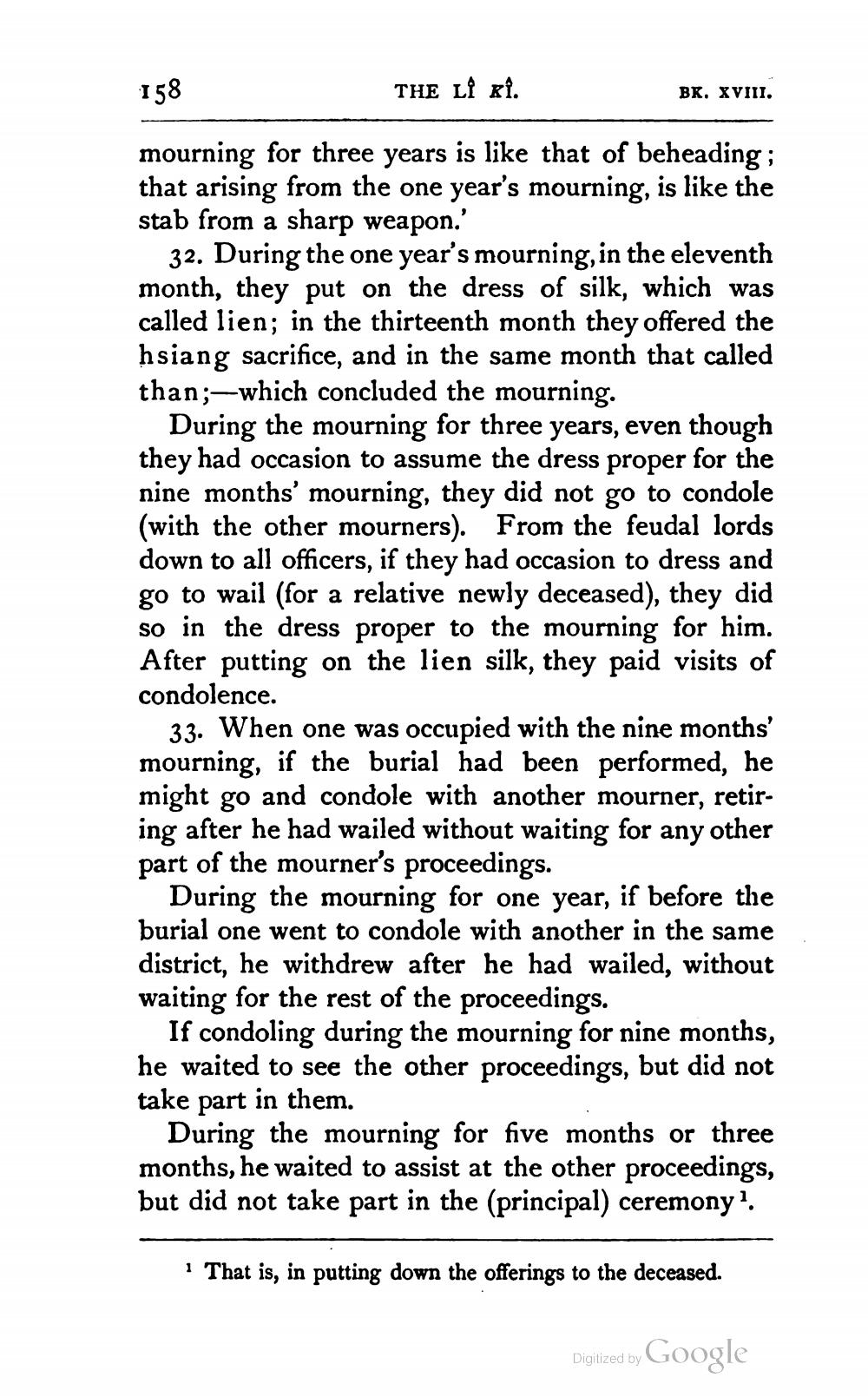________________
158
THE LI ri.
BR. XVIII.
mourning for three years is like that of beheading; that arising from the one year's mourning, is like the stab from a sharp weapon.'
32. During the one year's mourning, in the eleventh month, they put on the dress of silk, which was called lien; in the thirteenth month they offered the hsiang sacrifice, and in the same month that called than;—which concluded the mourning.
During the mourning for three years, even though they had occasion to assume the dress proper for the nine months' mourning, they did not go to condole (with the other mourners). From the feudal lords down to all officers, if they had occasion to dress and go to wail (for a relative newly deceased), they did so in the dress proper to the mourning for him. After putting on the lien silk, they paid visits of condolence.
33. When one was occupied with the nine months' mourning, if the burial had been performed, he might go and condole with another mourner, retiring after he had wailed without waiting for any other part of the mourner's proceedings.
During the mourning for one year, if before the burial one went to condole with another in the same district, he withdrew after he had wailed, without waiting for the rest of the proceedings.
If condoling during the mourning for nine months, he waited to see the other proceedings, but did not take part in them.
During the mourning for five months or three months, he waited to assist at the other proceedings, but did not take part in the (principal) ceremony.
· That is, in putting down the offerings to the deceased.
Digitized by Google




